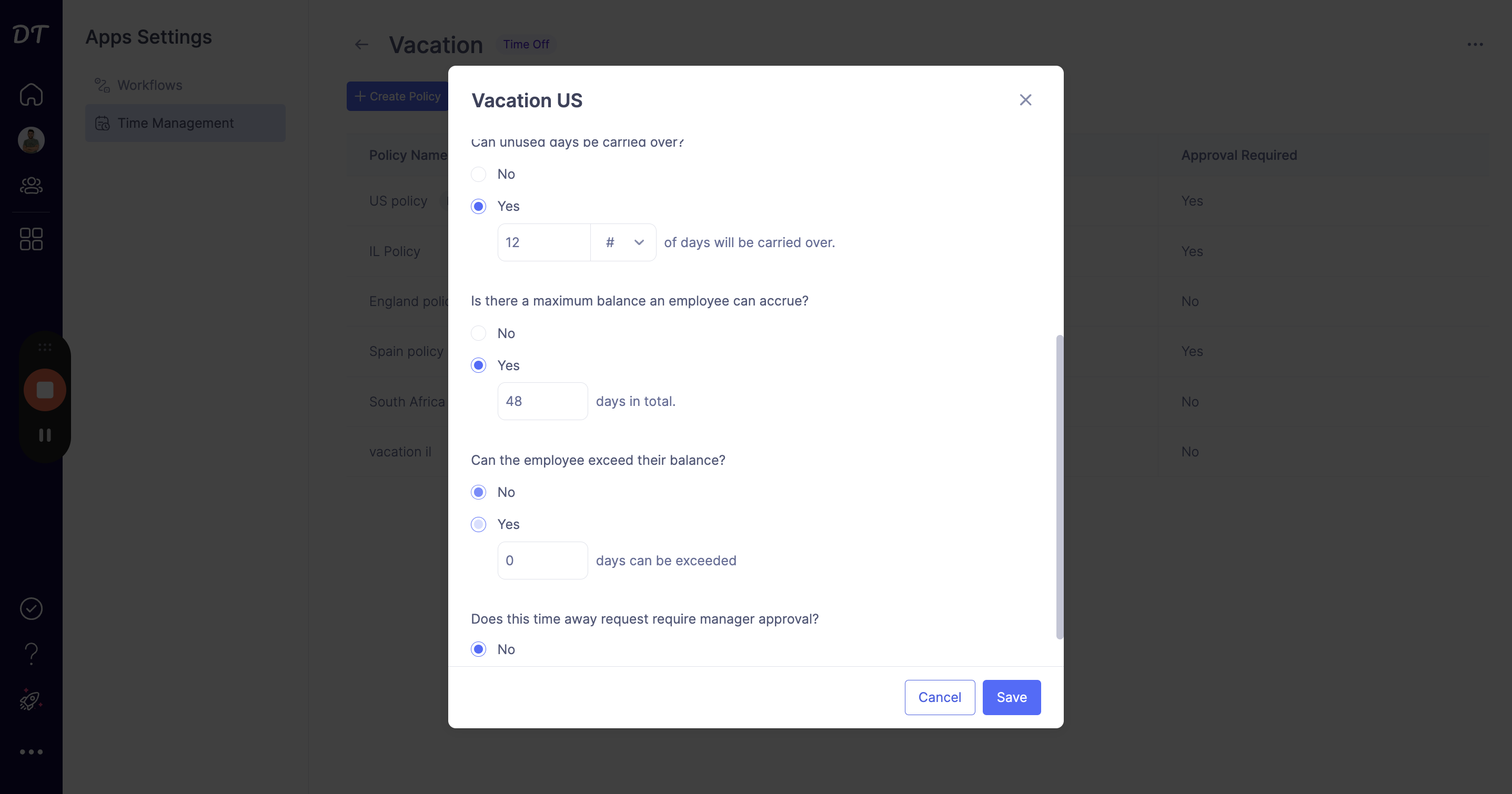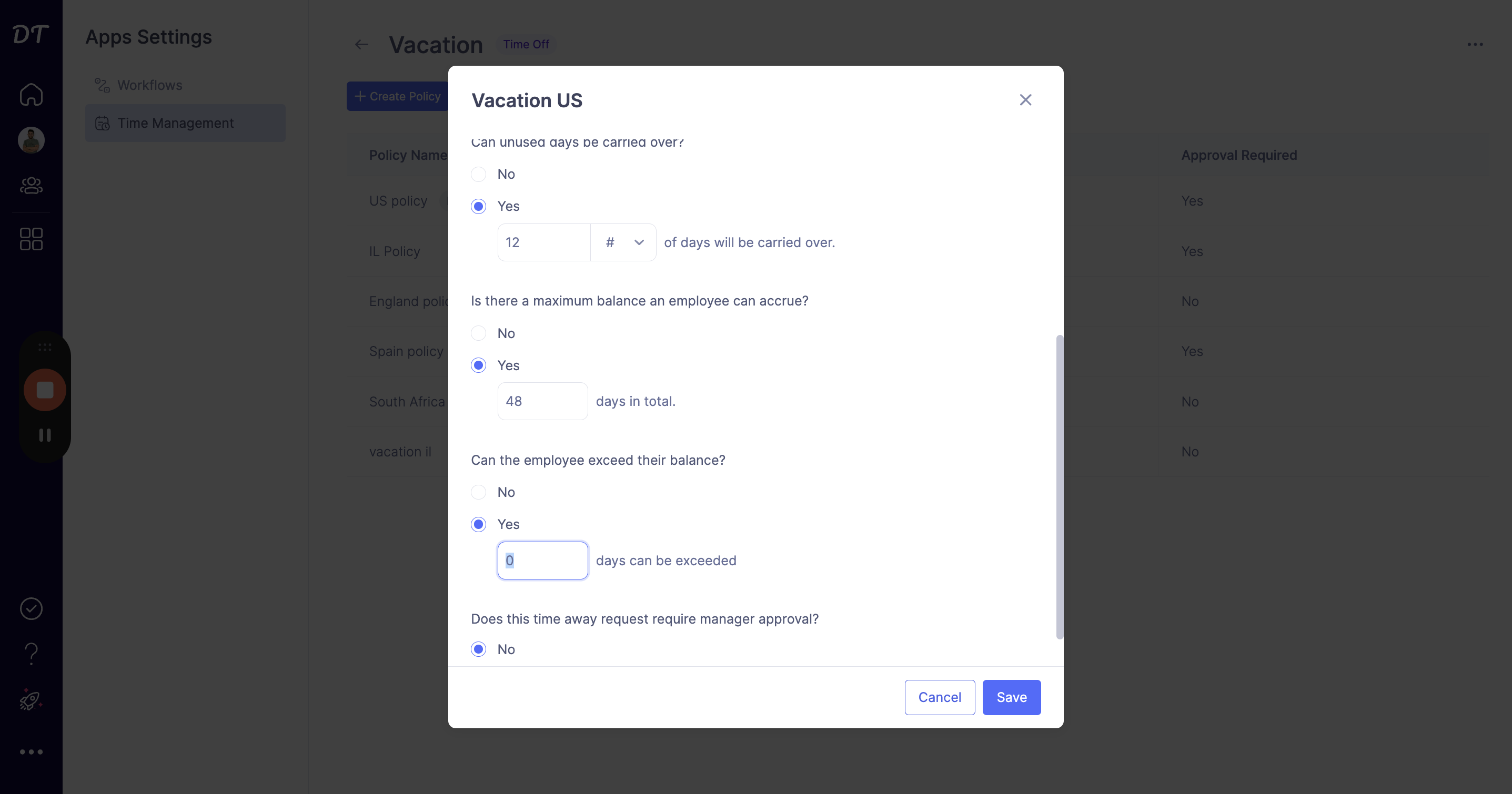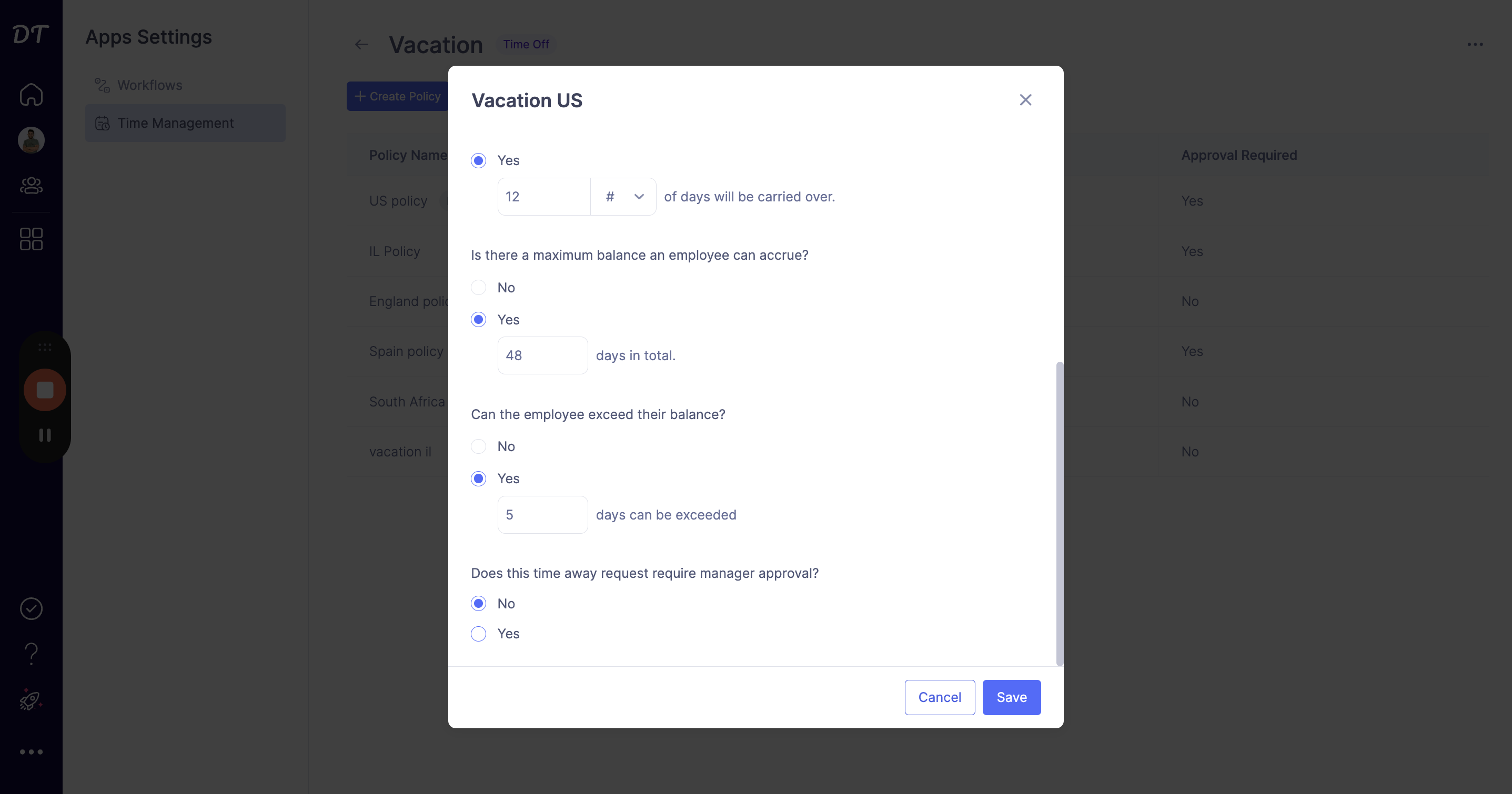Using Dream Team for Time Management: A Comprehensive Guide
Learn how to use Dream Team for your time management needs. This guide covers aspects like time away, attendance, and creating policies for each time away reason.
In this guide, we'll learn how to effectively manage time using DreamTeam for your organizational needs. DreamTeam offers comprehensive time management features that allow you to streamline your workforce's attendance and time away policies. By setting up specific rules and policies within the time management settings, you can efficiently handle employee absences and clocking hours. Let's dive into the process of creating and customizing policies within DreamTeam to optimize your time management strategies.
Setting Up Time Management Policies in DreamTeam
To begin, access the time management settings by clicking on the three dots located at the bottom left of the interface. From there, navigate to app settings and select the time management option. Within this section, you can differentiate between time away reasons and attendance tracking, providing a structured approach to managing employee schedules.
Creating Custom Policies for Time Off
Within the time away section, you have the flexibility to create various policies tailored to your organization's requirements. By defining parameters such as unlimited time off or annual time allocation, you can establish clear guidelines for your employees' leave entitlements. Customize settings like accrual rates, carry-over limits, maximum balances, and approval requirements to align the policies with your company's time management objectives.
Let's get started.
Today, I will guide you on using Dream Team for your time management requirements.
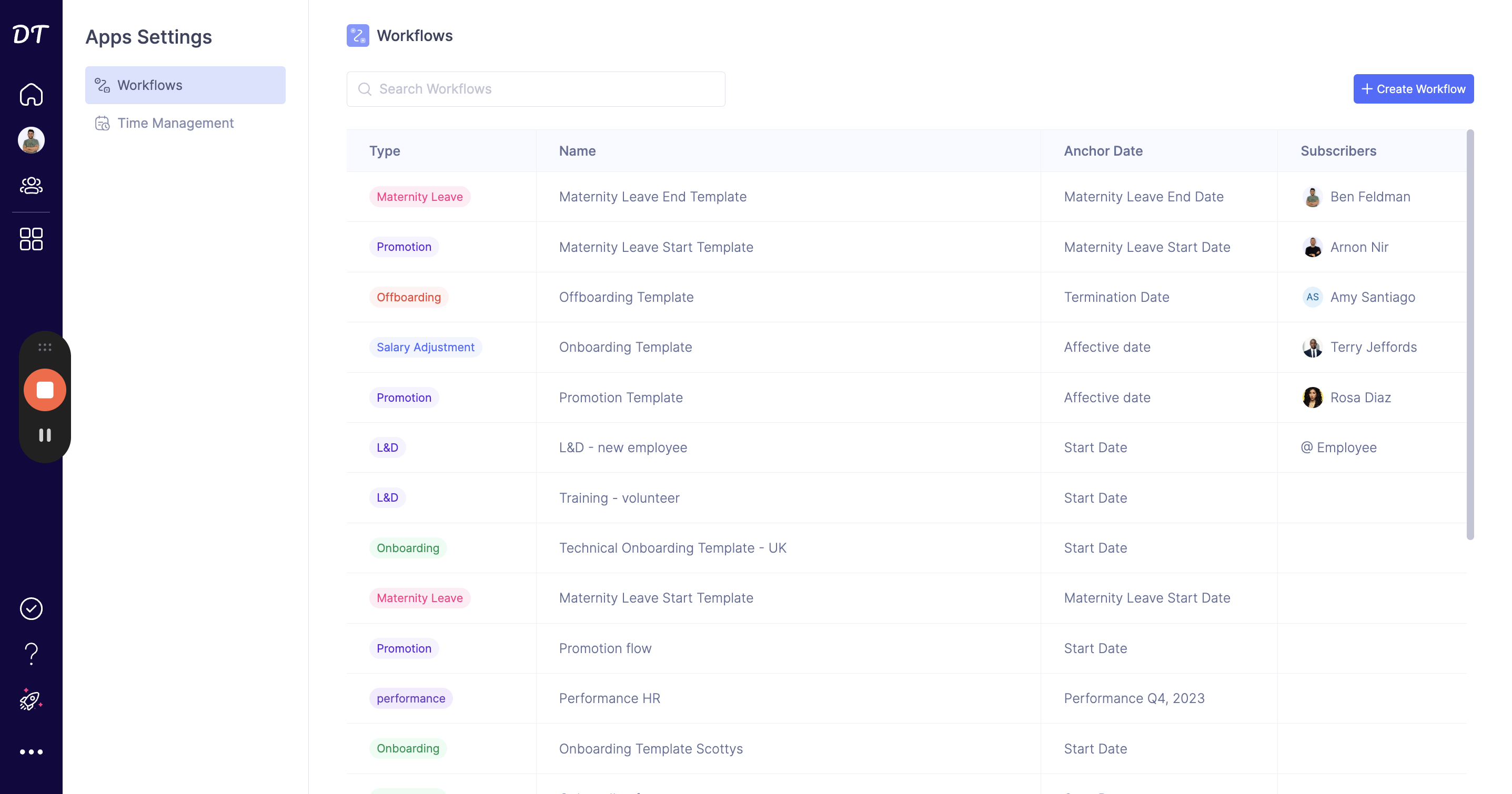

To access all your time management settings, click on the three dots located at the bottom left.
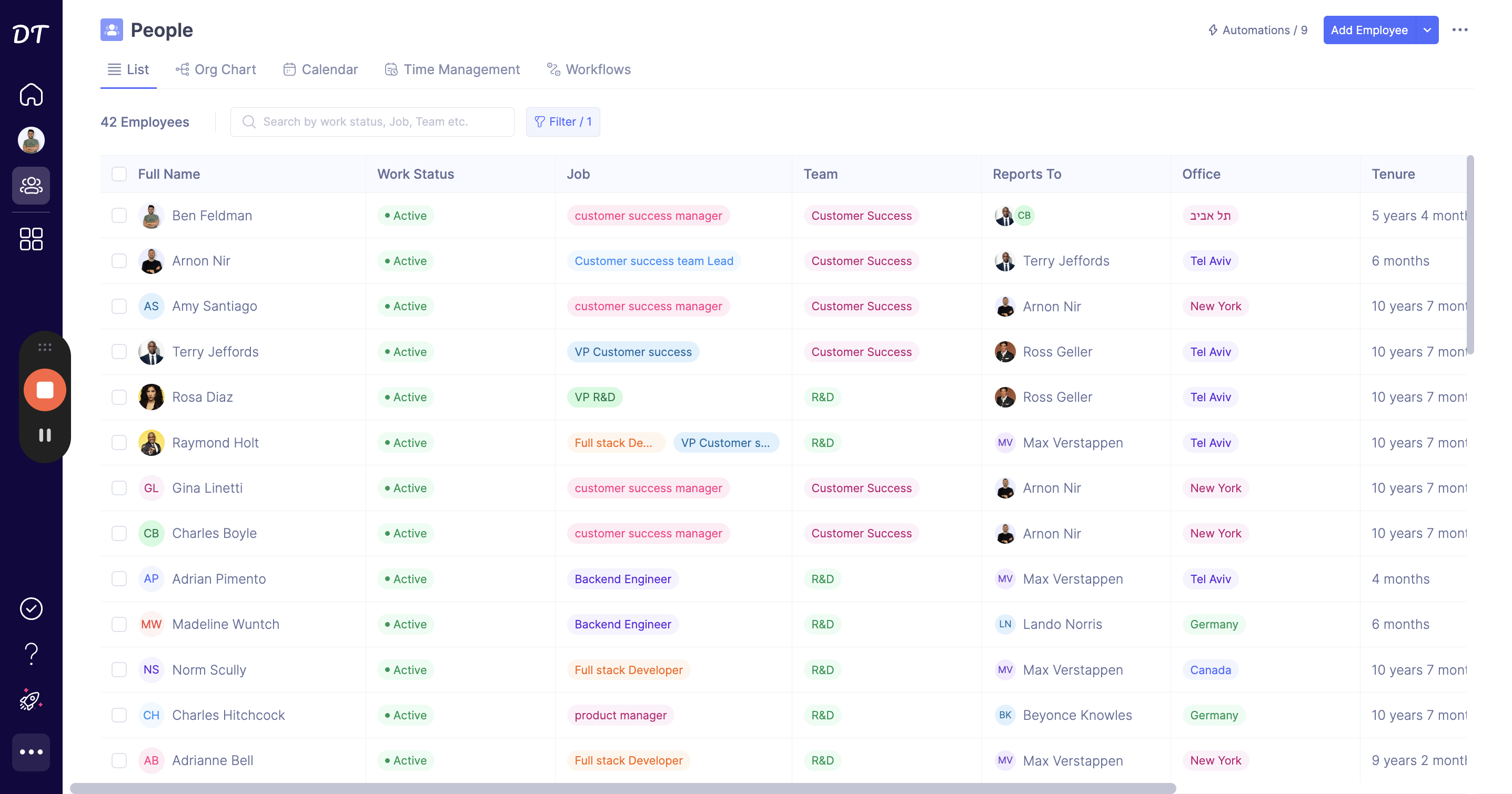
You can go to the app settings and then navigate to time management.
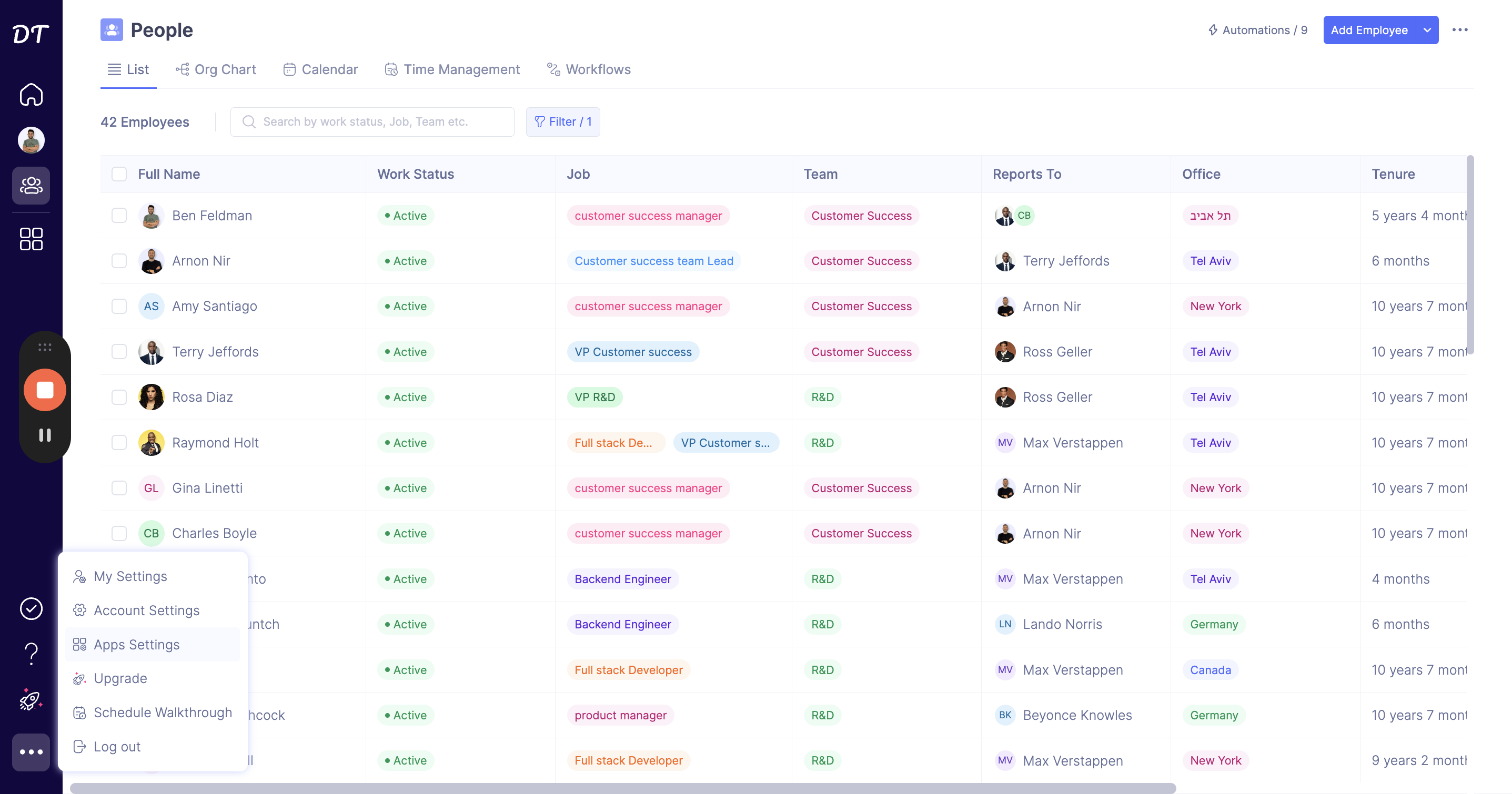

In time management, there are two main aspects to consider: time away and attendance. Time away refers to any reasons why an employee is not in the office, while attendance pertains to the daily clocking hours of your employees. You can create different policies for each time away reason.
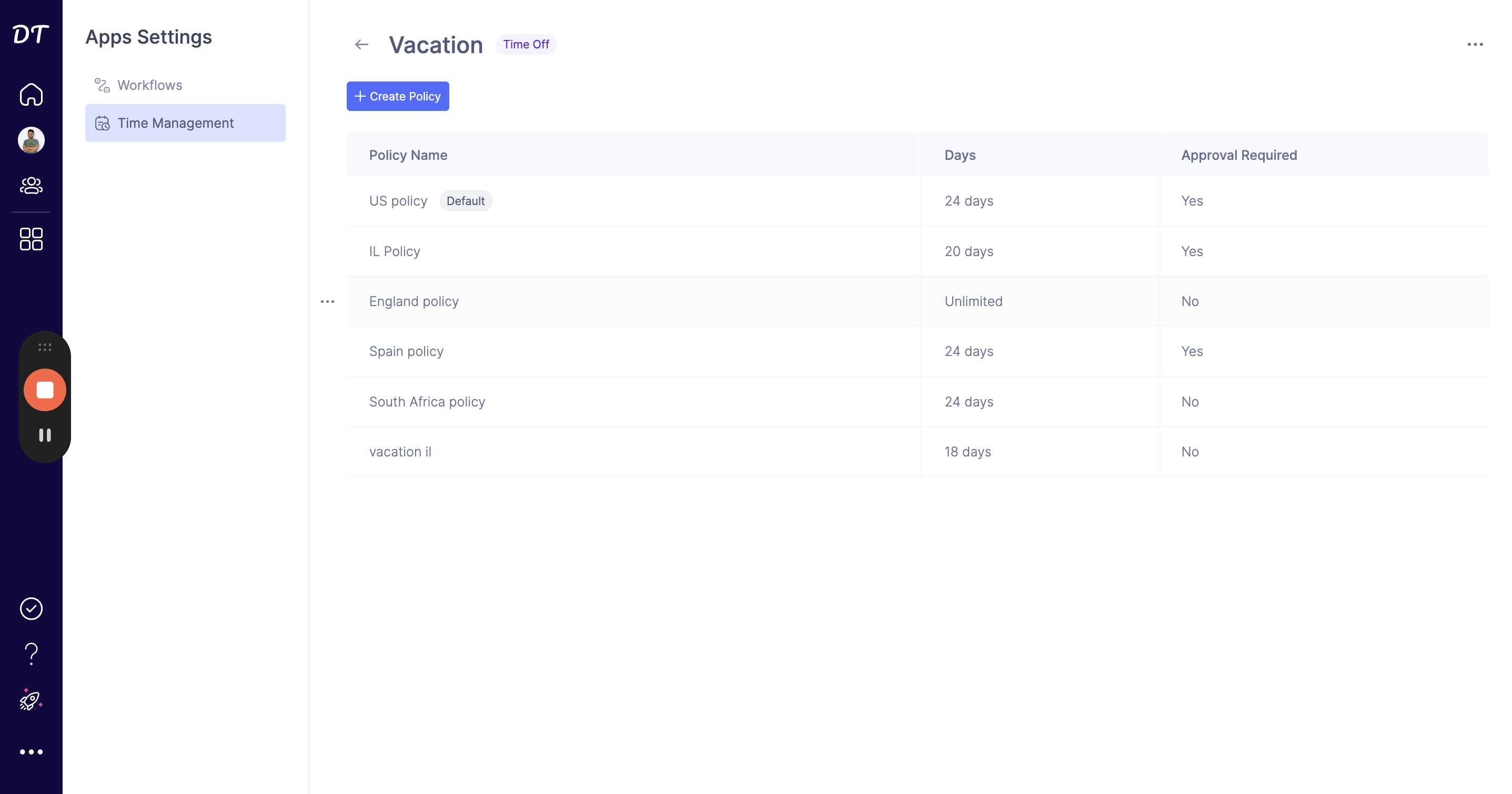
So, I can click in and create as many policies as I want. In this example, I'm going to create a new policy.
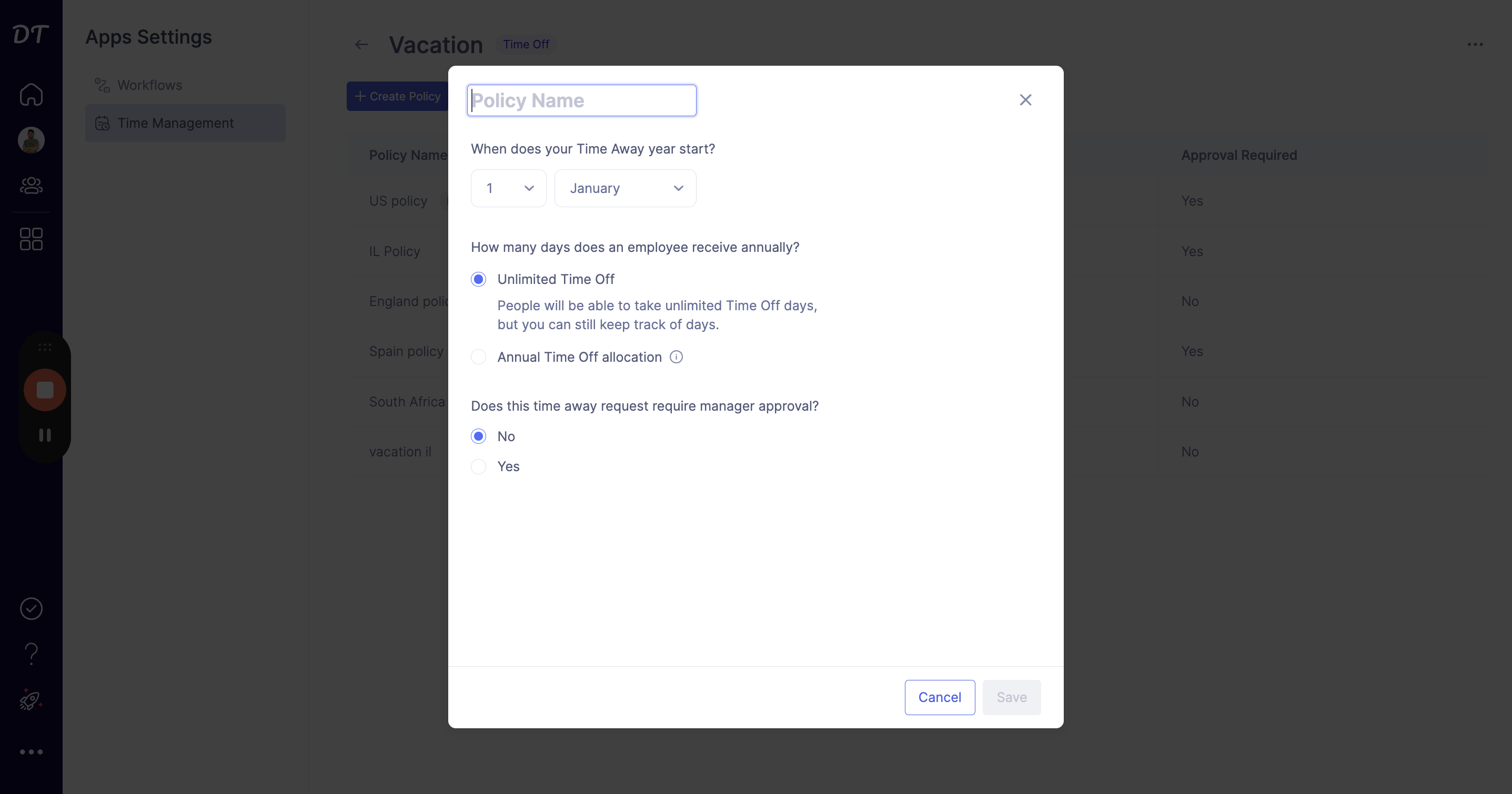
I will name it Vacation US and establish all the rules. Firstly, I can decide between offering unlimited time off where employees can take as many days as they wish or an annual time allocation where they receive a set number of days each year.
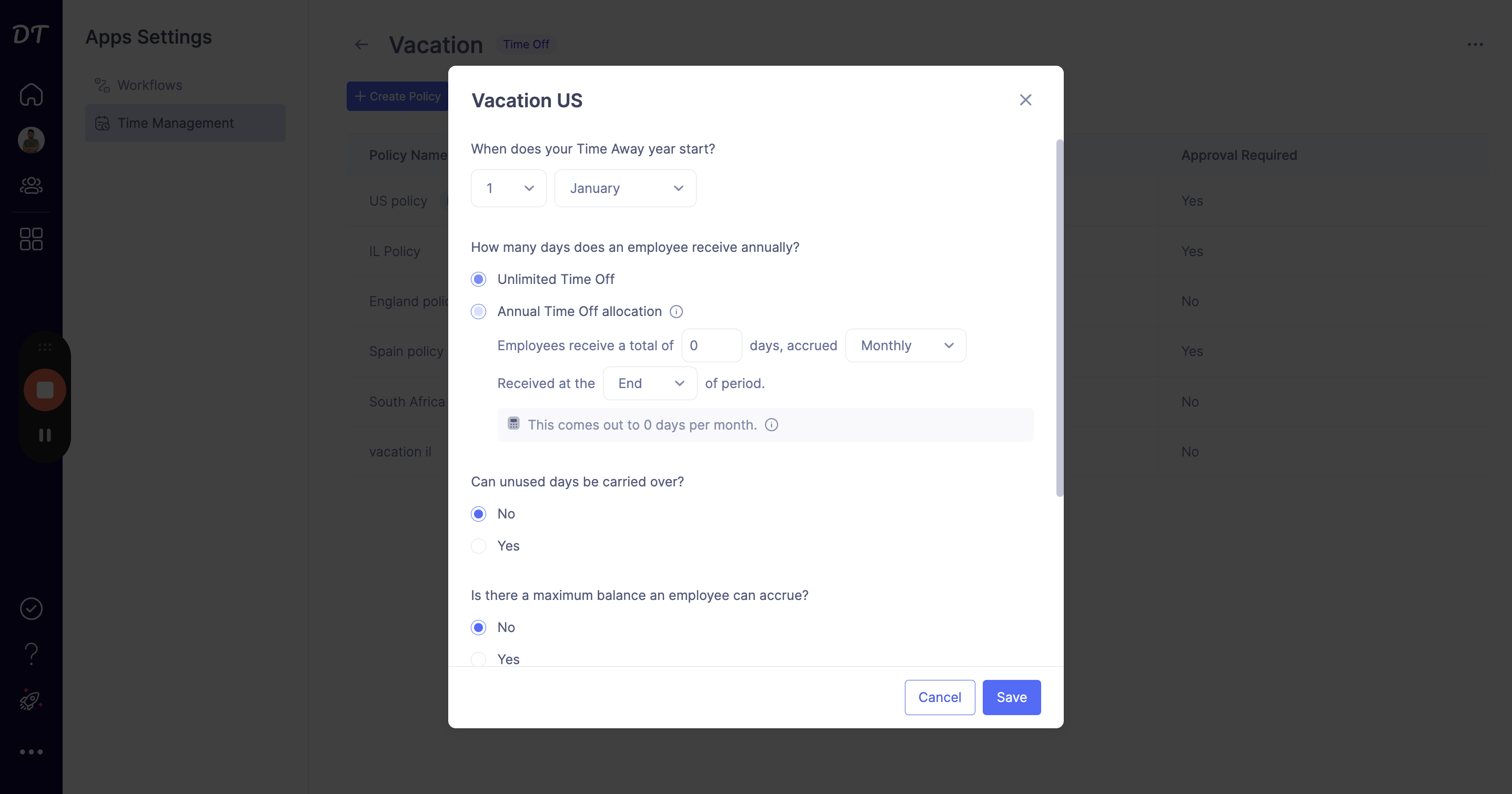
Now, the total amount is what I'm going to input here. Then, I will select how frequently they receive a specific portion of it.
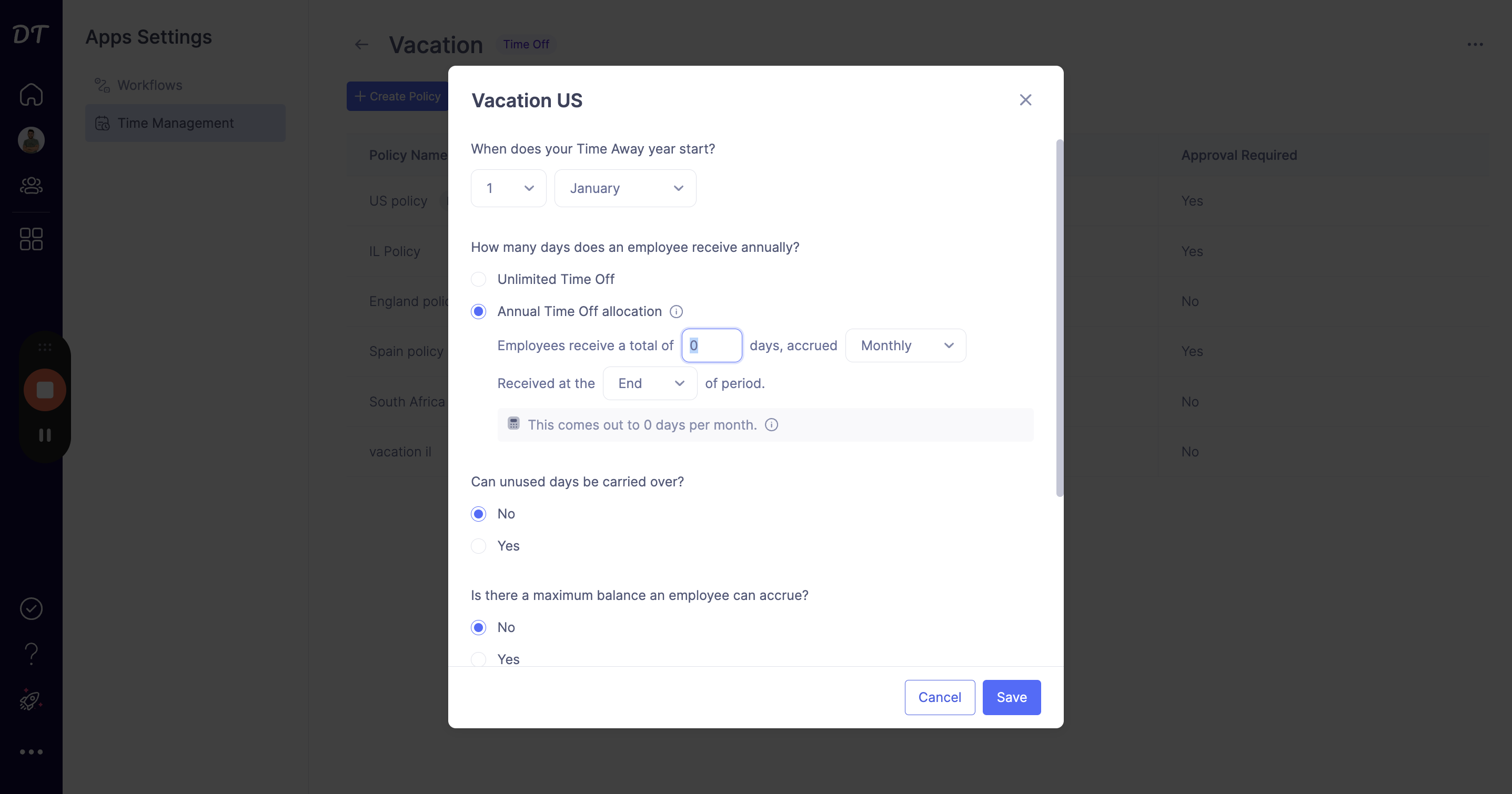
In this case, I'll say monthly, which means they receive one.
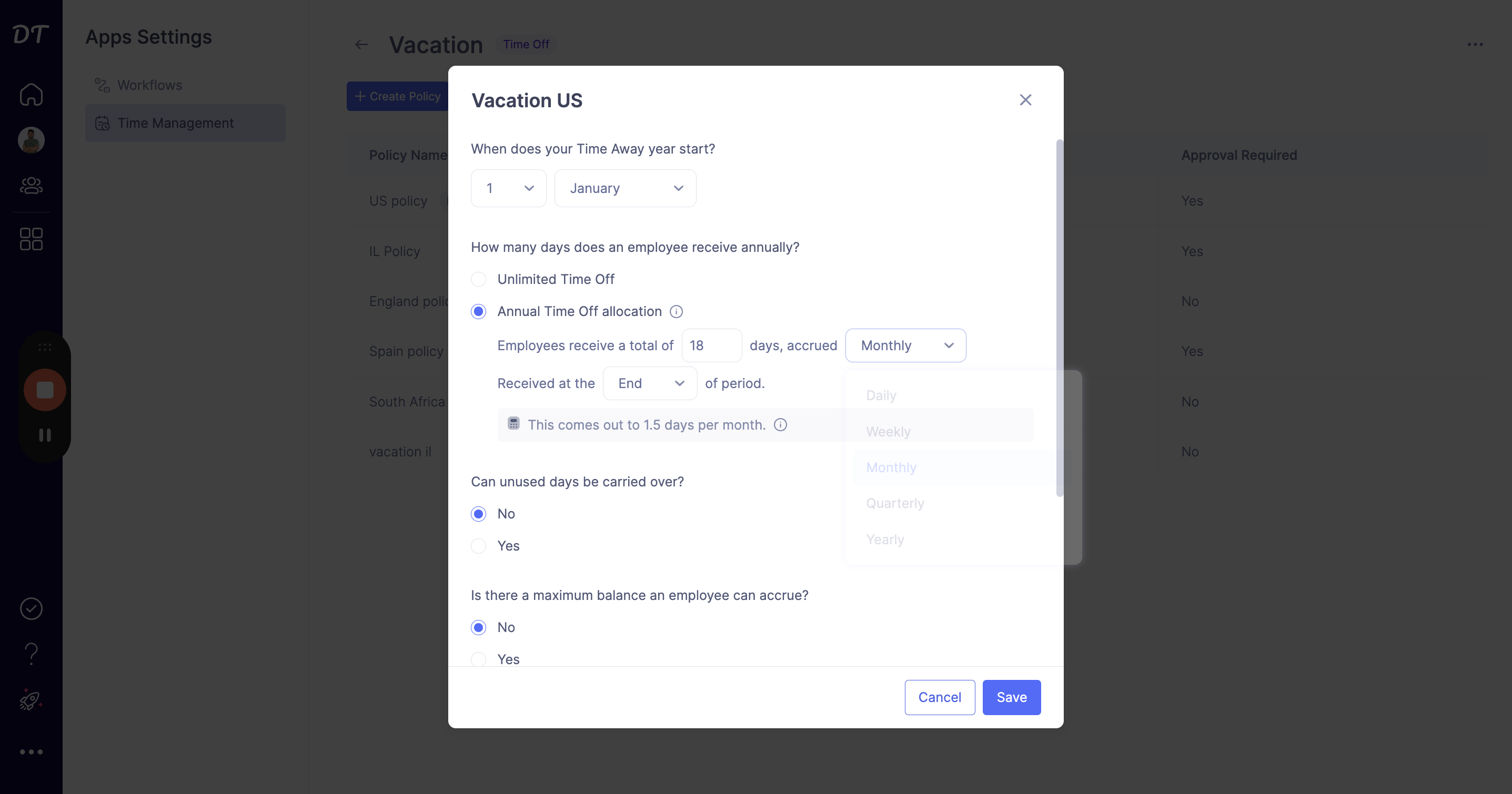
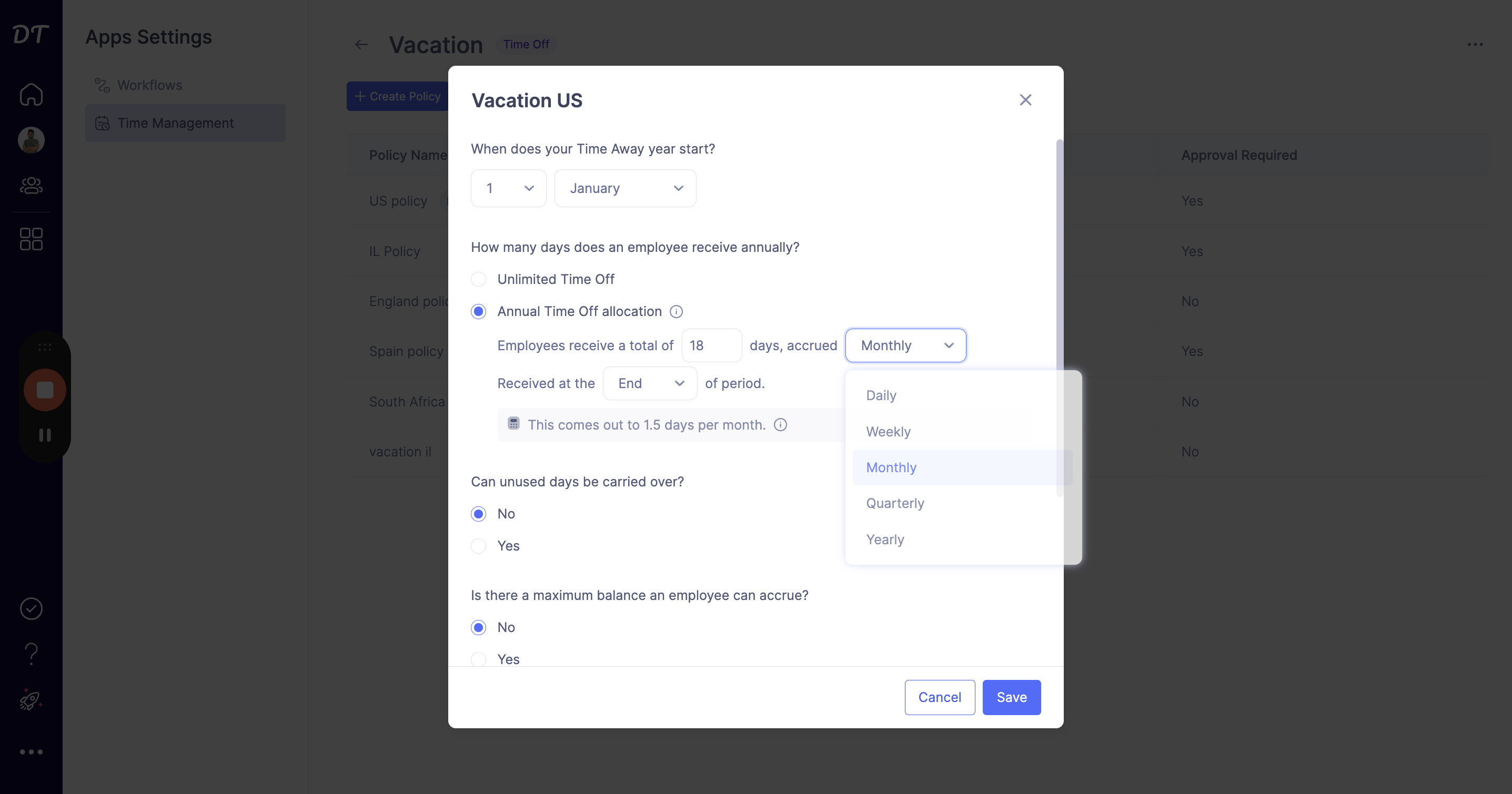
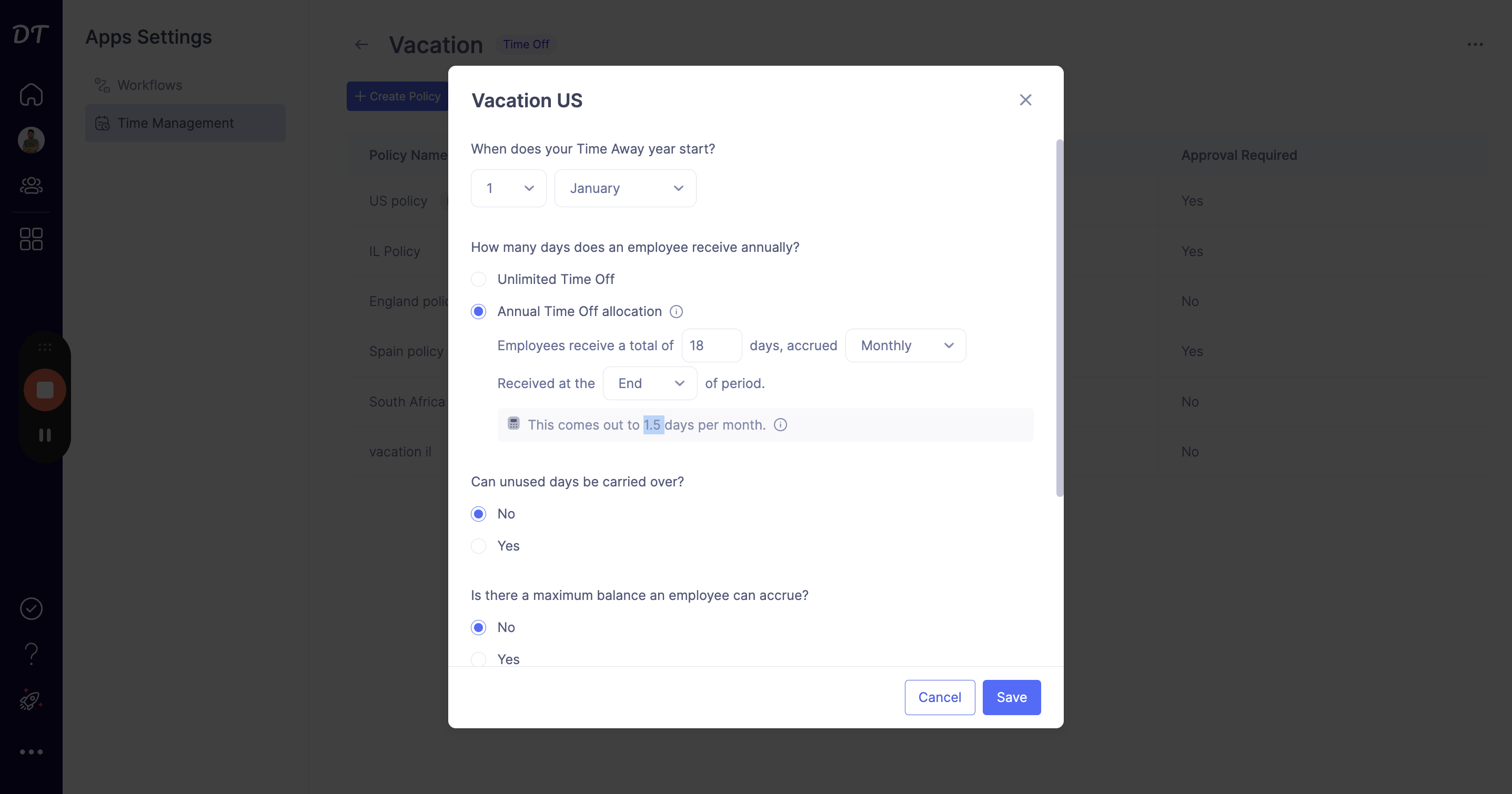
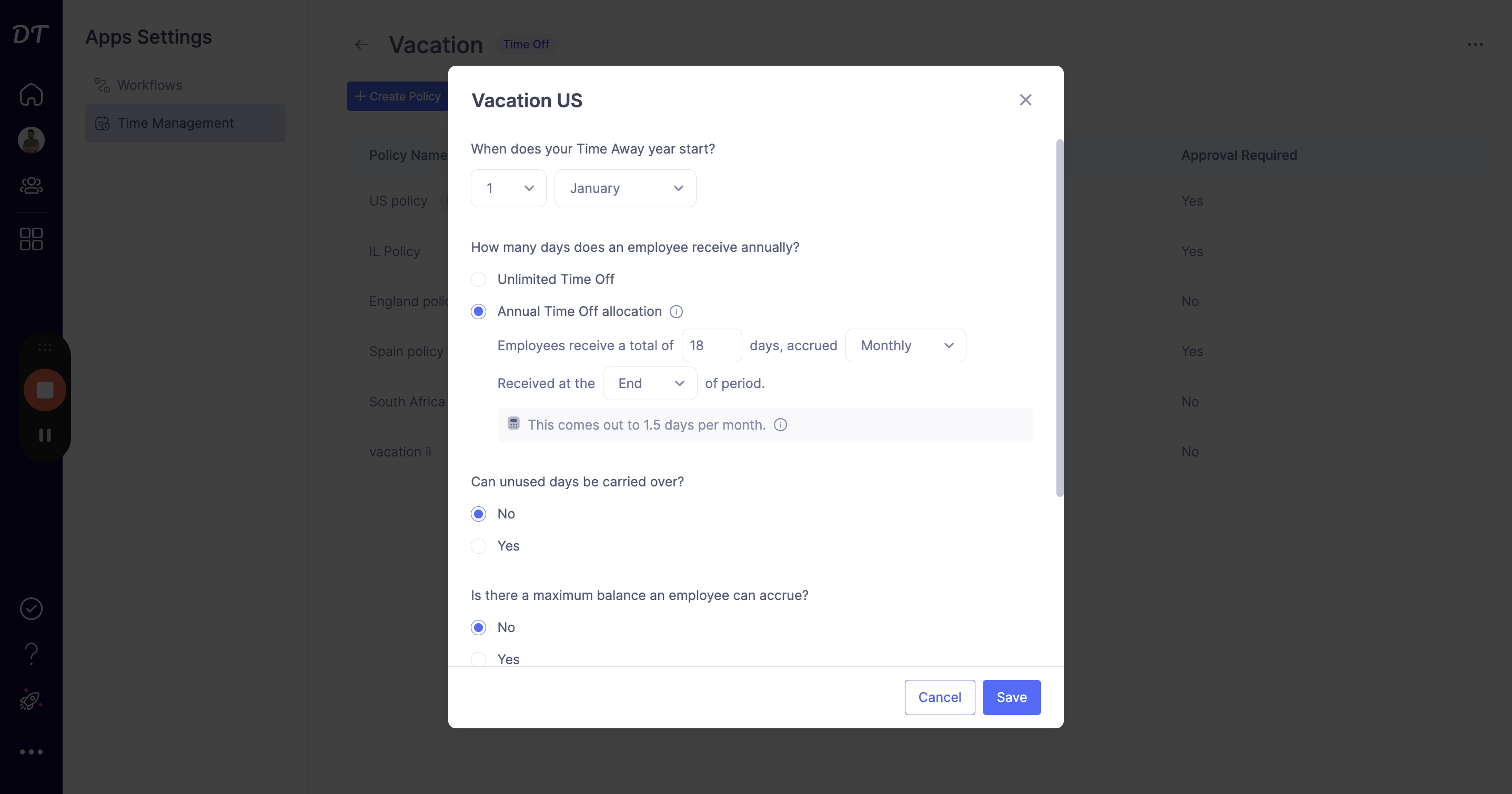
5 days per month. Can unused days be carried over? If I don't use these days in one year, can they be carried over to the next year? Yes, but only up to a total of 12 months.
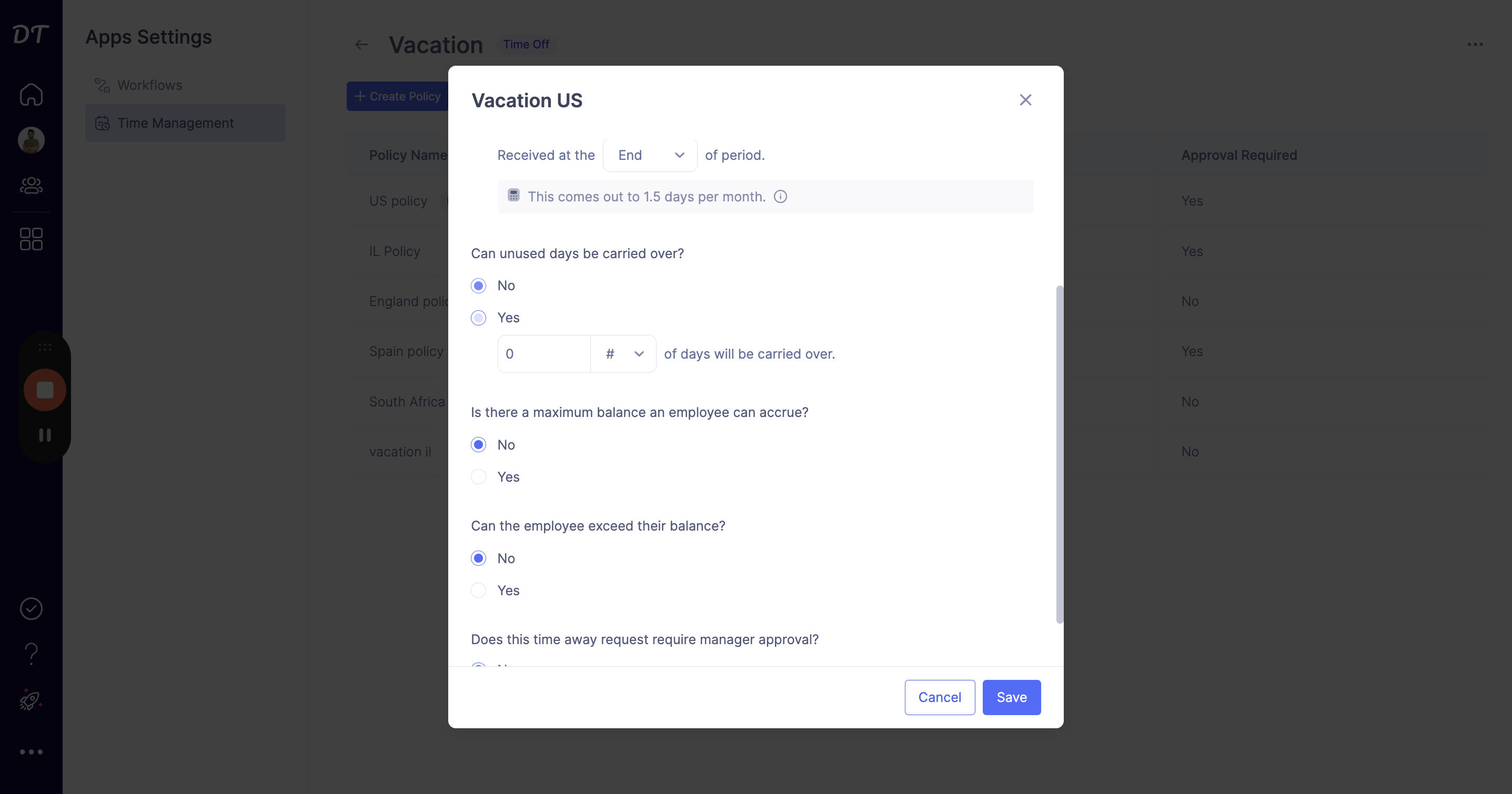
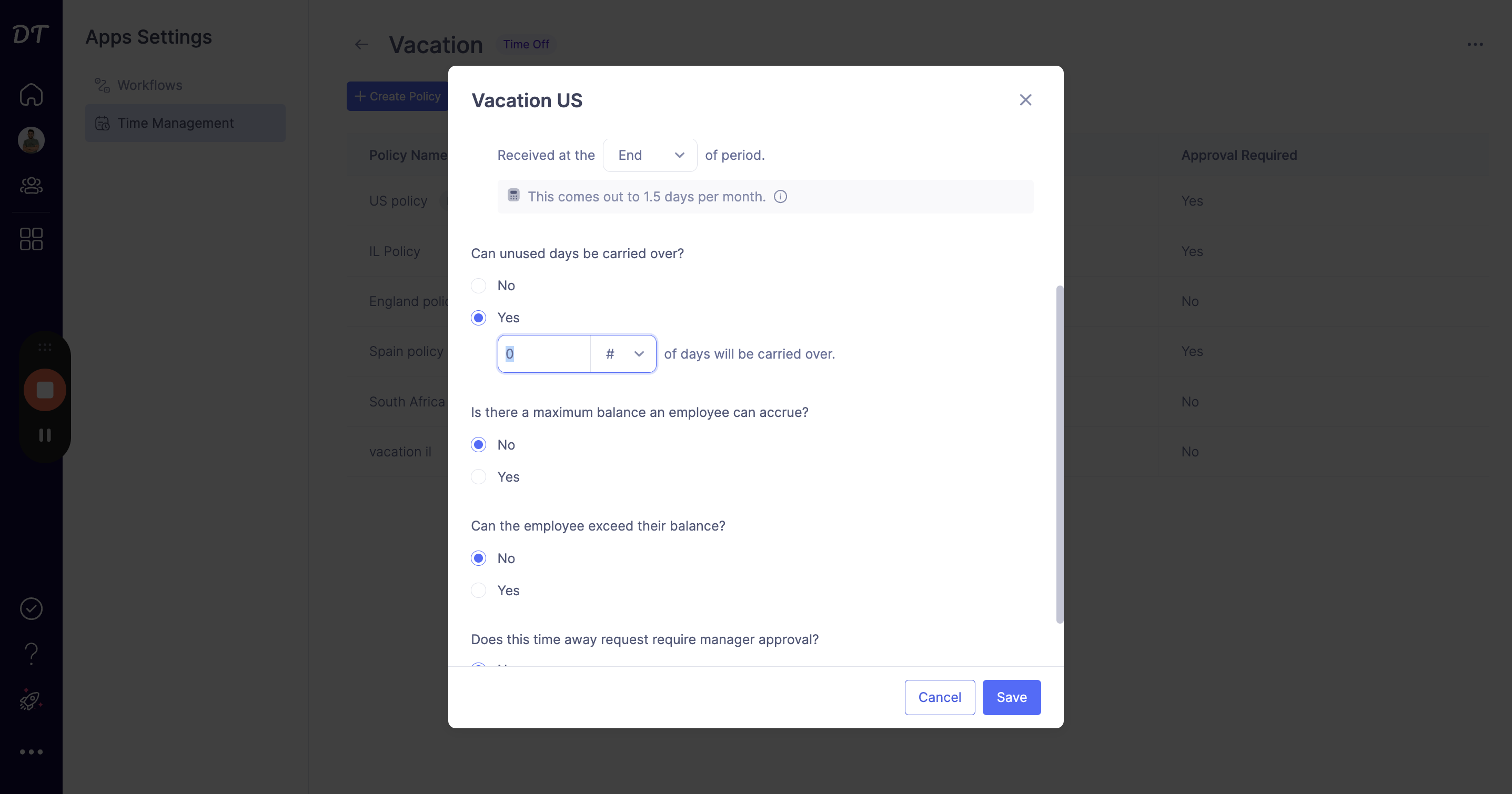
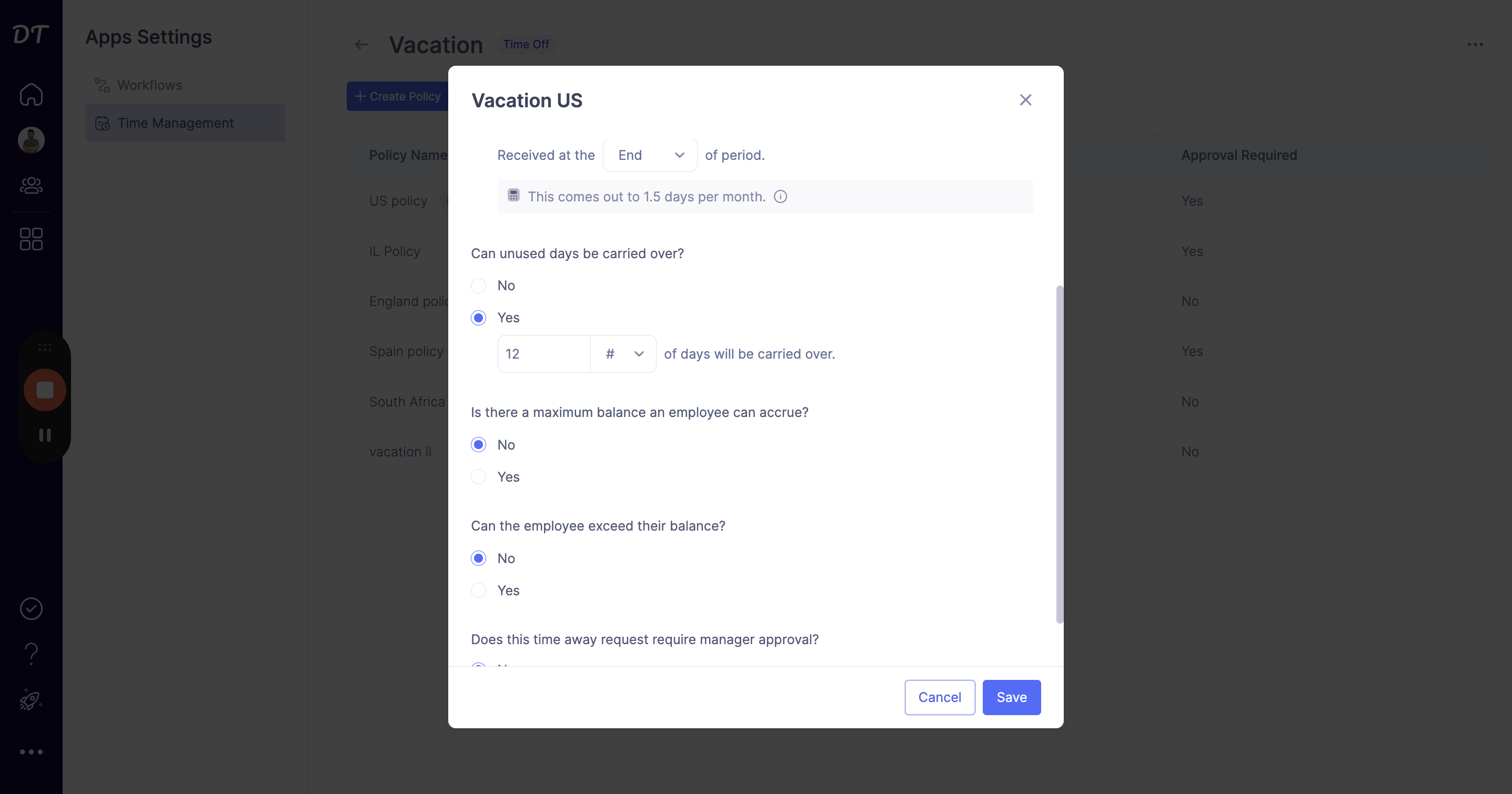
The next question is: Is there a maximum balance that the employee can accrue? Is there a limit to how much they can accrue before you stop adding more? The answer is yes, they can accrue a total of 48.
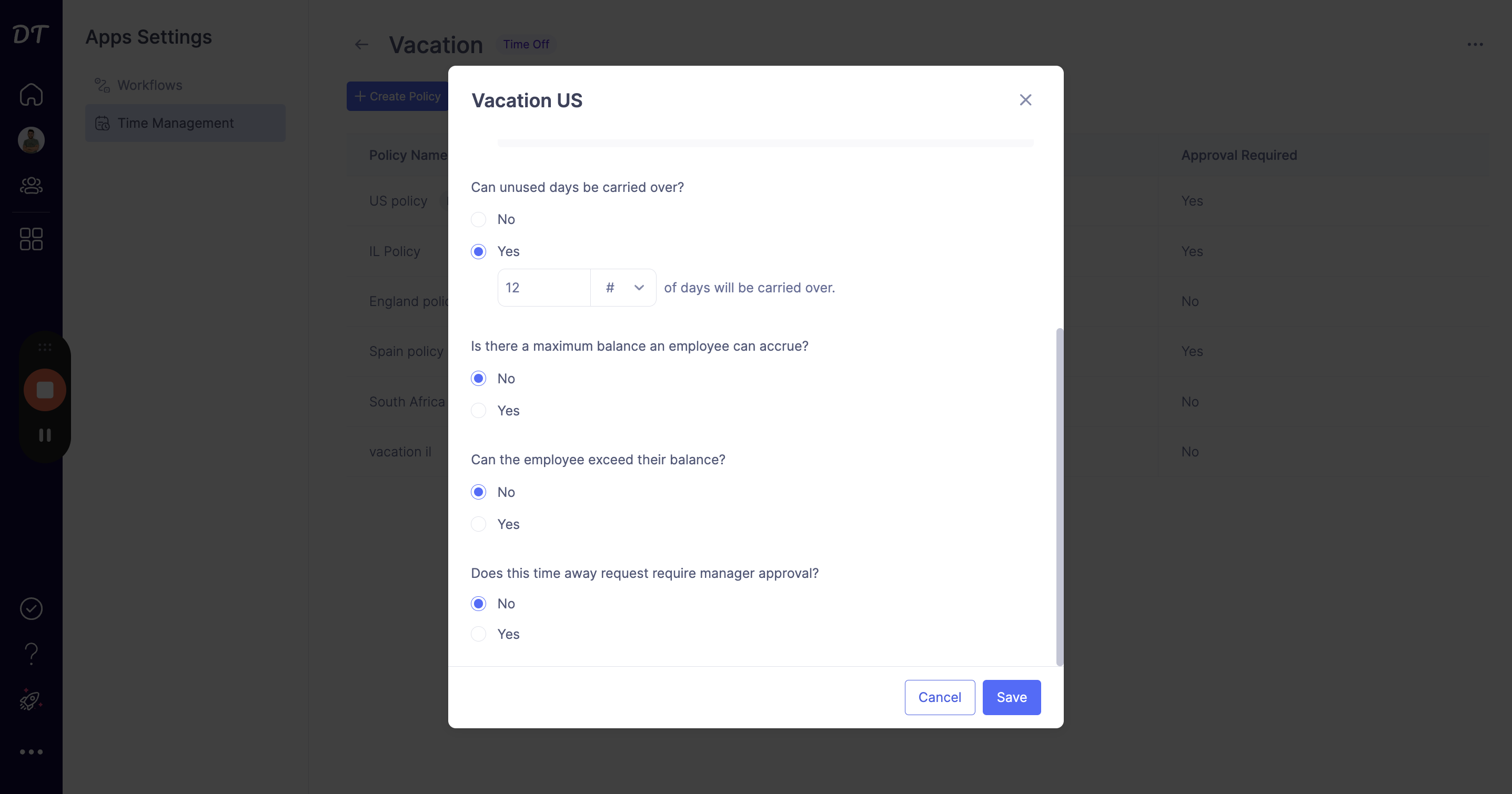
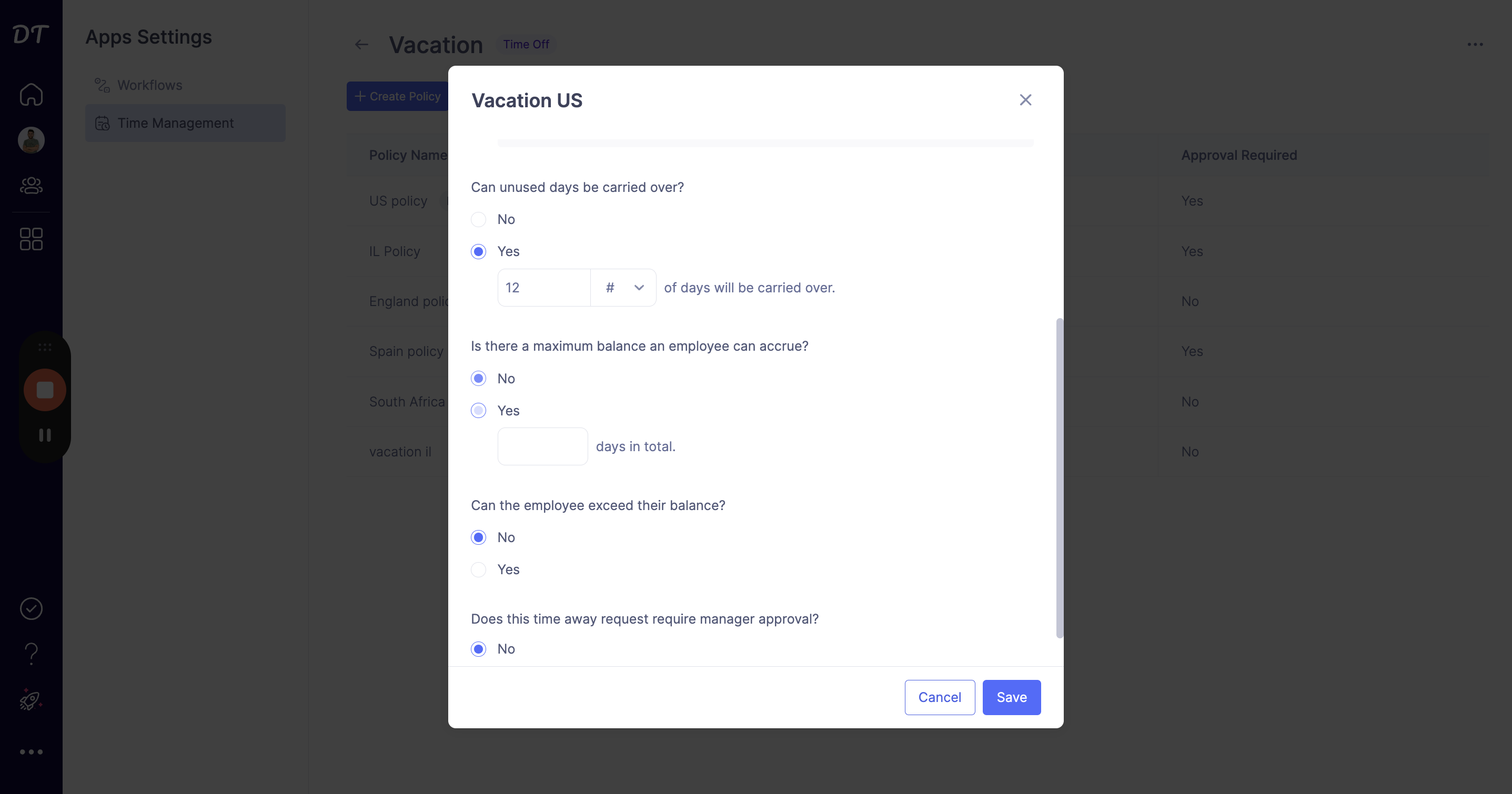
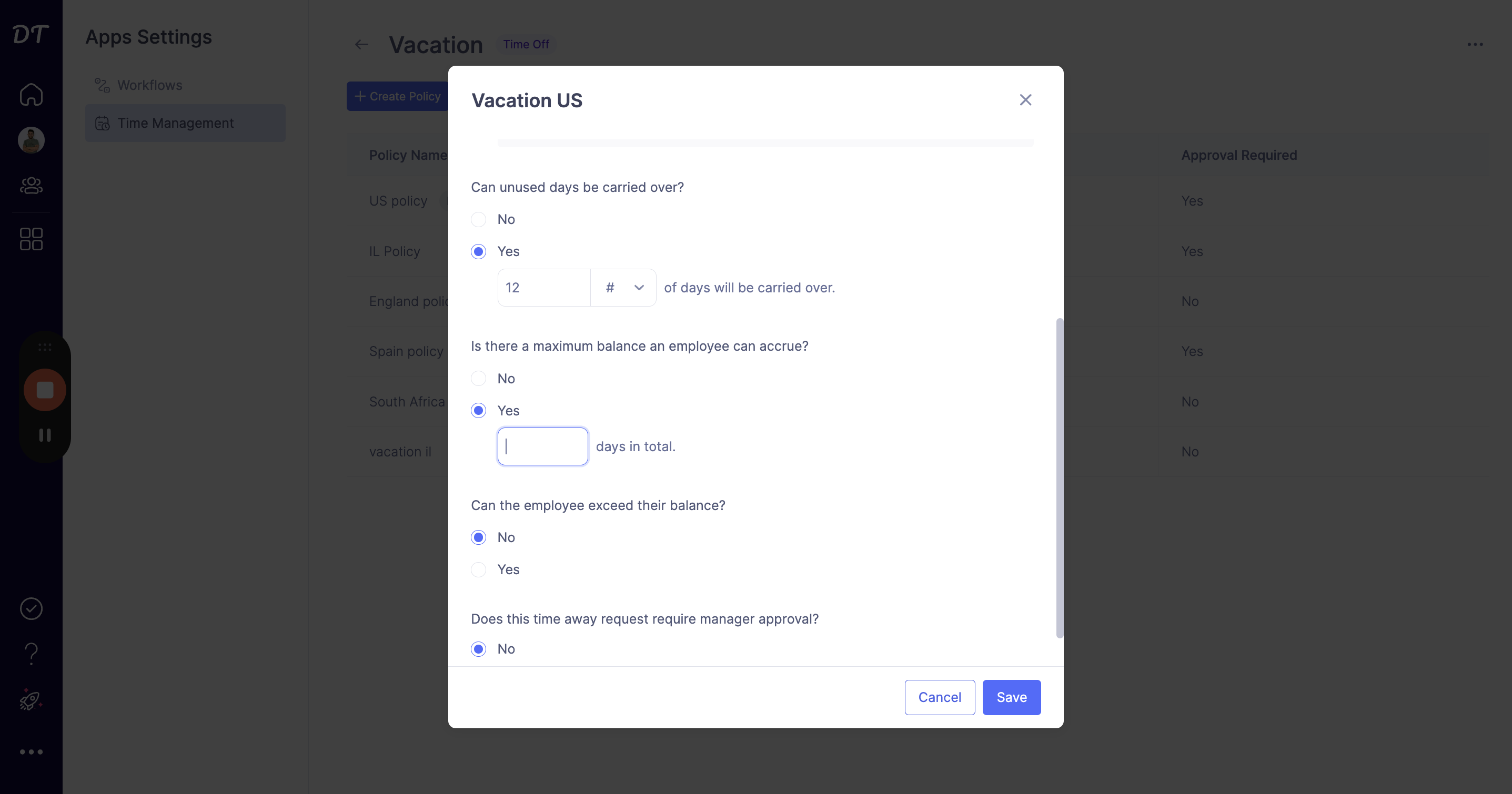
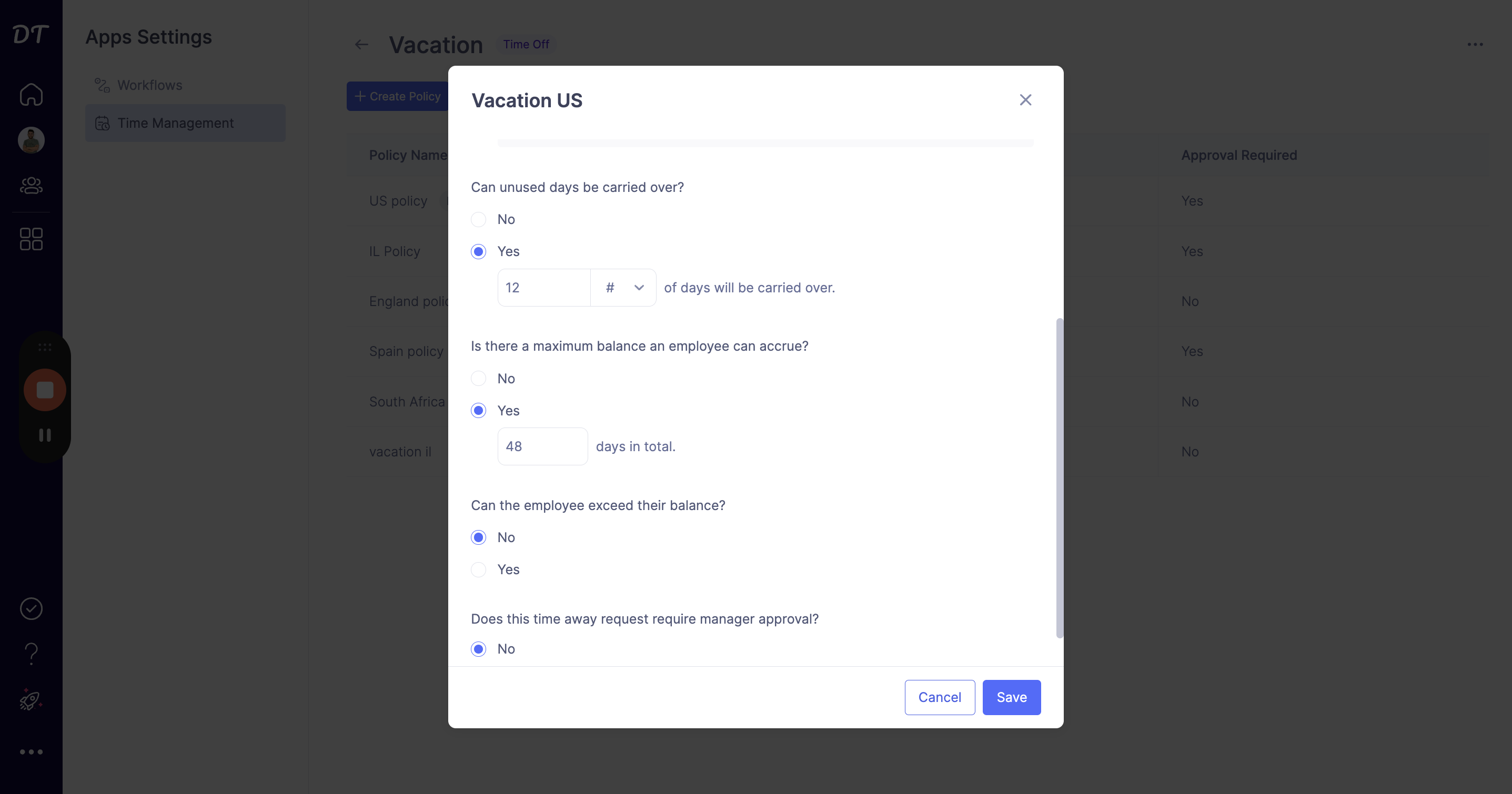
Then the question is, can they exceed the balance? Can they go into a negative amount of vacation days? You're going to say yes. They can go into negative five. Does it require manager's approval? And we're going to say yes.
